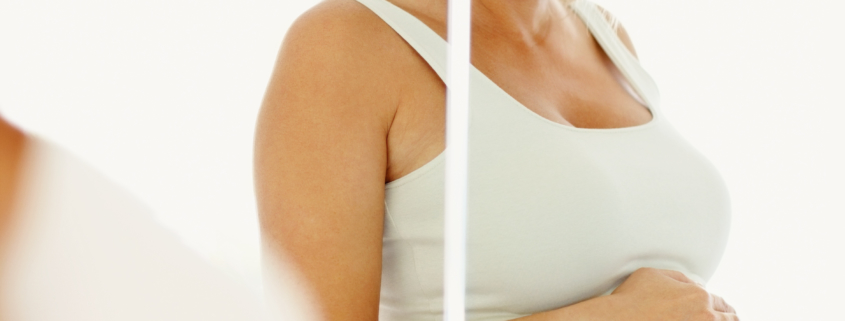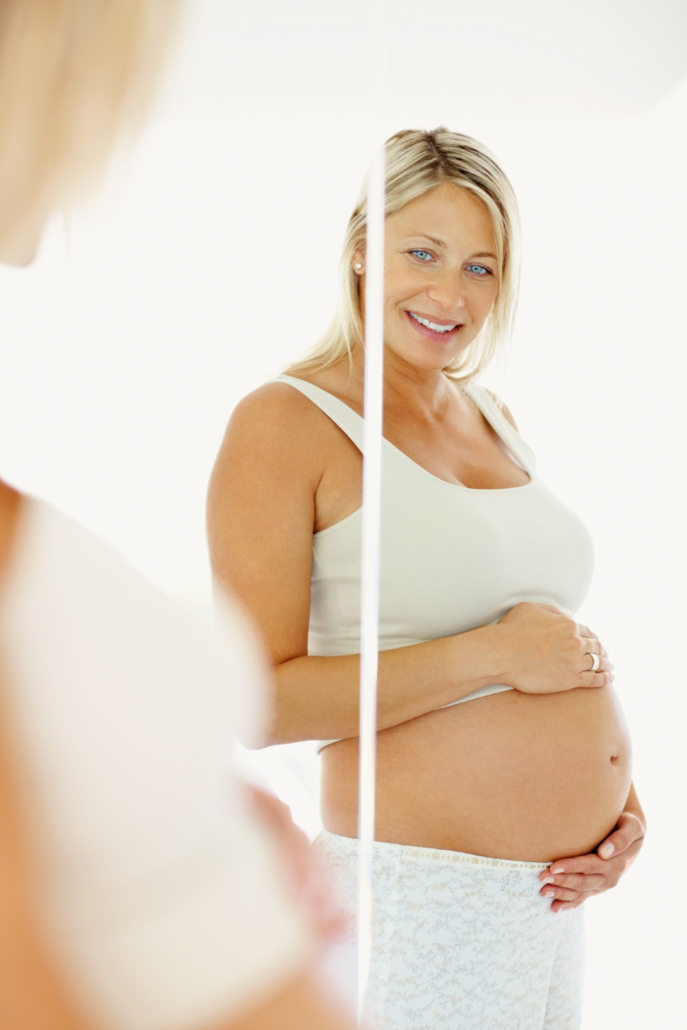What actually happens in the last three months of pregnancy?
How does the child develop and what does this mean for the expectant mother?
The third trimester (months 7 to 9) explained.
Seventh month: already 1,500 grams in weight
At the beginning of the 7th month of pregnancy, the baby is about 30 cm tall and weighs 1,500 g; it now looks like a newborn.
By the 36th week of pregnancy, the baby is storing more and more fat in its subcutaneous fatty tissue.
This means that it has its own well-functioning thermoregulation after birth.
In the last three months of pregnancy, the baby moves very regularly and shows its ‘own’ pattern.
It usually lies in the typical embryonic position, but it can also turn back and forth.
A particularly difficult time for the mother’s back
The last trimester of pregnancy is usually very difficult for the mother.
Her organs are increasingly constricted by the growing uterus.
This leads to typical pregnancy symptoms such as heartburn, constipation, shortness of breath and an increased urge to urinate.
Due to the pregnancy hormone progesterone the mother’s ligamentous apparatus has been very loose since the beginning of pregnancy.
This puts a lot of strain on the spine, so that the mother adopts a hollow back posture and often has back pain.
Position of the fetus in the seventh month
As the due date approaches, the position of the baby in the uterus becomes increasingly important.
Many babies lie in the so-called cephalic position from the very beginning or only turn into this position four weeks before birth.
Babies in the breech or transverse position can sometimes be maneuvered into the cephalic position by the mother’s abdominal wall.
A breech presentation does not automatically require a caesarean section.
Experienced obstetricians can deliver a baby from a breech position in the normal way.
Exercise contractions: possible from 32nd week of pregnancy
The uterus now slowly begins to contract, the so-called training contractions.
This trains the uterus for the birth, so to speak, without the cervix opening.
From the 32nd week of pregnancy, these preterm contractions can occur four times an hour; they allow the cervix and uterus to mature for the birth.
Contractions and opening contractions
Four weeks before the birth, contractions usually occur.
The mother’s body lowers and sometimes the baby’s head also sinks into the mother’s pelvis.
With the onset of labor, the opening contractions occur; they lead to the opening of the cervix.
The last trimester of pregnancy is usually very difficult for the mother.
Her organs are increasingly constricted by the growing uterus.
This leads to typical pregnancy symptoms such as heartburn, constipation, shortness of breath and an increased urge to urinate.
Due to the pregnancy hormone progesterone the mother’s ligamentous apparatus has been very loose since the beginning of pregnancy.
This puts a lot of strain on the spine, so that the mother adopts a hollow back posture and often has back pain.
Position of the fetus in the seventh month
As the due date approaches, the position of the baby in the uterus becomes increasingly important.
Many babies lie in the so-called cephalic position right from the start or only turn into this position four weeks before birth.
Babies in the breech or transverse position can sometimes be maneuvered through the mother’s abdominal wall into the cephalic position.
A breech presentation does not automatically require a caesarean section.
Experienced obstetricians can deliver a baby from a breech presentation in the normal way.
Exercise contractions: possible from 32nd week of pregnancy
The uterus now slowly begins to contract, the so-called training contractions.
This trains the uterus for the birth, so to speak, without the cervix opening.
From the 32nd week of pregnancy, these preterm contractions can occur four times an hour; they allow the cervix and uterus to mature for the birth.
Contractions and opening contractions
Four weeks before the birth, contractions usually occur.
The mother’s body lowers and sometimes the baby’s head also sinks into the mother’s pelvis.
With the onset of labor, the opening contractions occur; they lead to the opening of the cervix.
This post is also available in: French German Italian Spanish Portuguese (Portugal) Dutch Swedish Arabic Turkish Bosnian















